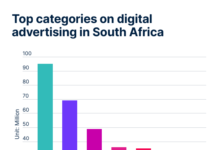According to Natalie Pool, Head of Content at VMLY&R South Africa, content writing and now more specifically the burgeoning field of user experience (UX) writing is not like conceptual copywriting. We are not trying to outsmart our audience or make them wonder if they should change their mind. As content designers, we are here to make our users’ lives easier.
If they have to think about, or question their next move, we have failed. Our job is to work with UX and user interface (UI) designers (not before or after they’ve done their part) to create a customer journey that feels natural, simple and intuitive.
I have been in love with words for as long as I can remember. And I’ve been lucky enough to create a career out of them – first in magazines, then with blogs and social media and now in websites and apps. And as much as the platforms may change, the key principle stays the same: write for the user.
And the only way to do this is through understanding and a little thing called empathy. This means lots and lots of research into the industry as a whole, the specific business, its customers, their pain points and goals. And then we collaborate with the other members of our customer experience team to create visuals and words that work together to help customers accomplish their mission.
While currently working on a complex web project with many moving parts, I have created my own guiding principles needed to create worlds, with words. And I shall illustrate them, with something we can all relate to – food! And more importantly how to order it.
1. Meet expectations
Whether in a restaurant or browsing online, people have certain expectations on how and where to find what they’re looking for. Whether it’s starters, mains, sides and desserts or pasta, pizza, grill and seafood, we have been programmed to look for information in a certain way. As content designers, we must give our customers what they want in a tone and style that matches their mood. Don’t put dinner before breakfast. Don’t hide the sauce in the drinks. And please don’t put the prices before the descriptions.
2. Write for mindsets, not target markets
I cringe at the mention of target markets, as though people fit into a box and never leave it. Just because I crave fast food one day, doesn’t mean I don’t enjoy a fine dining experience the next. As writers, we must put ourselves in our customers’ shoes at that moment and speak to them in a way that answers a specific need right now.
3. Create great decision-makers
Have you ever looked at a menu so overwhelming and ordered a toasted cheese sandwich because it was easier than finding what you really wanted? We’re here to help people make good decisions, not just any decision. Name items in a way that makes sense to humans, not just to the business. Write clear, enticing descriptions that are easily comparable. Identify the vegetarian options with a symbol. Add images that are appealing but also honest. Let people know if they can customise their meal, and give them space to make that special request.
4. Remember your regulars
The gold standard for customer experience is personalisation – remembering someone when they come back to your restaurant or website with a friendly ‘Hi, nice to see you again.’ Once you’ve been personally introduced, it’s greeting them by name when they sit down or log in. And as you get to know them, it’s remembering their favourite meal and even their special requirements. This creates a truly memorable experience and goes a long way to create loyal customers and valuable brand ambassadors.
5. Pay attention to detail
A great customer experience is in the detail. It’s the sign when you walk in, the story of your restaurant’s beginnings in the menu, it’s the chalkboard specials on the wall and the signs to the restroom. The tone for all should be human, consistent and easy to understand. And it should translate to digital. From the welcome screen to error messages, the calls to action to the confirmation screen, micro copy is often overlooked but can make or break your customers’ experience. Take time to craft every word so your user feels empowered, welcomed and part of the family.










